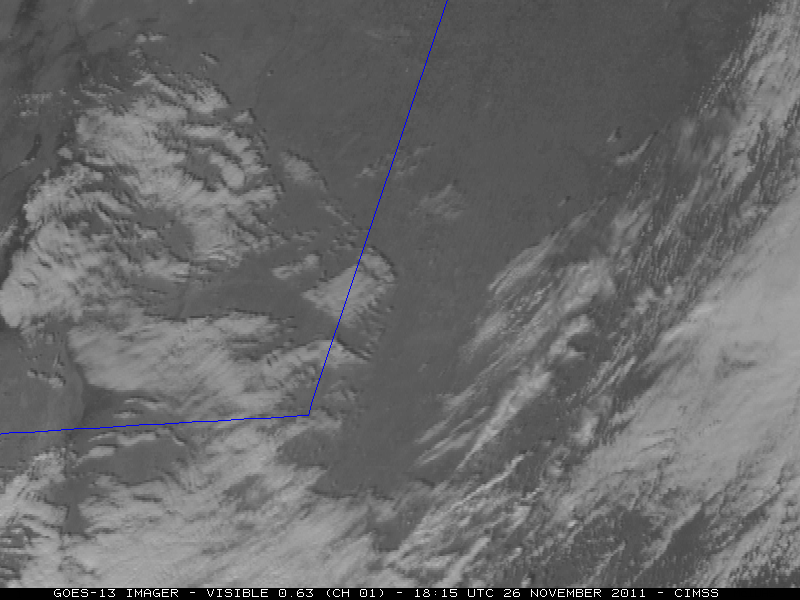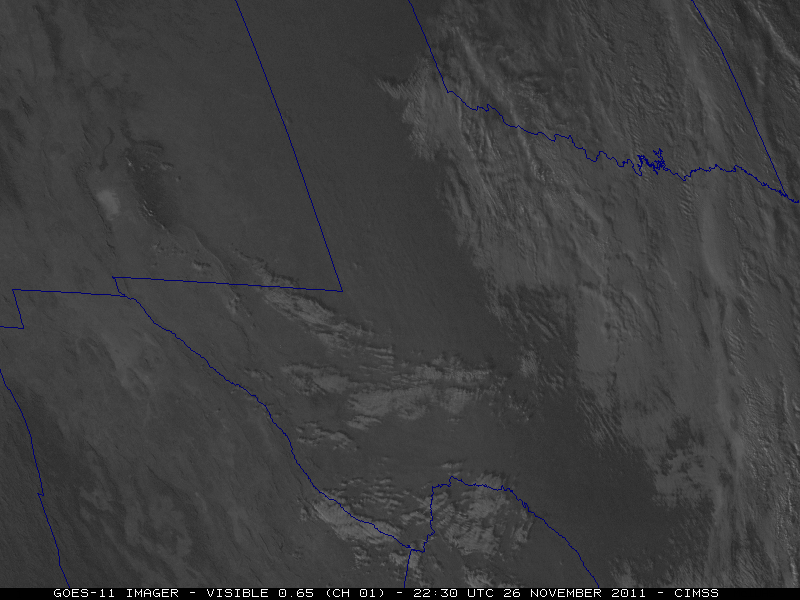Blowing dust in west Texas
Strong northerly winds in the wake of a cold frontal passsage caused widespread blowing dust across parts of west Texas during the afternoon hours on 26 November 2011. The hazy plumes of blowing dust could be seen on GOES-13 0.63 µm visible channel images (above). At Midland, Texas (located near the center of the images) the winds gusted to 51 mph, and surface visibility was reduced to 0.5 mile at times.
After sunset, when visible imagery was no longer available, the southward progress of the airborne dust could still be tracked using a GOES-11 IR difference product (below), created by subtracting the 12.0 µm IR brightness temperature from the 10.7 µm IR brightness temperature. The larger IR difference values (around 2-3 degrees Kelvin, yellow color enhancement) represented the portions of the airborne dust cloud that were the most concentrated.
It is important to note that GOES-11 (GOES-West) is the only remaining operational GOES satellite that still has the 4-km resolution 12.0 µm IR channel on the Imager instrument (a 10-km resolution 12.0 µm channel is still on the Sounder instrument on all GOES satellites) — and GOES-11 will soon be replaced by GOES-15 on 06 December 2011. After that time, using such an IR difference product to track areas of blowing dust will have to be done using polar orbiting satellites (such as POES, MODIS, or NPP) or the GOES Sounder that still have the 12.0 µm IR channel.



